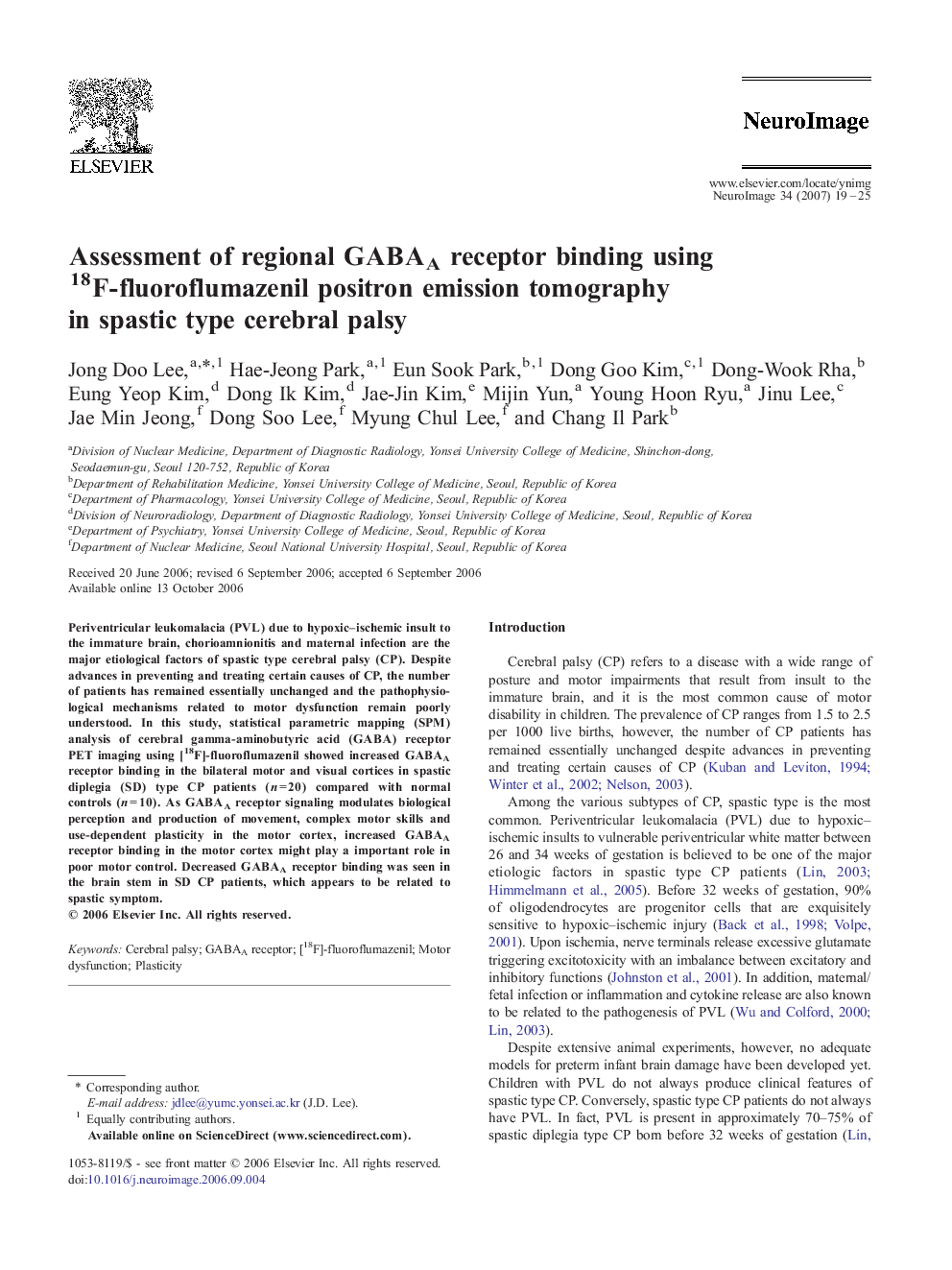| Article ID | Journal | Published Year | Pages | File Type |
|---|---|---|---|---|
| 3074297 | NeuroImage | 2007 | 7 Pages |
Periventricular leukomalacia (PVL) due to hypoxic–ischemic insult to the immature brain, chorioamnionitis and maternal infection are the major etiological factors of spastic type cerebral palsy (CP). Despite advances in preventing and treating certain causes of CP, the number of patients has remained essentially unchanged and the pathophysiological mechanisms related to motor dysfunction remain poorly understood. In this study, statistical parametric mapping (SPM) analysis of cerebral gamma-aminobutyric acid (GABA) receptor PET imaging using [18F]-fluoroflumazenil showed increased GABAA receptor binding in the bilateral motor and visual cortices in spastic diplegia (SD) type CP patients (n = 20) compared with normal controls (n = 10). As GABAA receptor signaling modulates biological perception and production of movement, complex motor skills and use-dependent plasticity in the motor cortex, increased GABAA receptor binding in the motor cortex might play a important role in poor motor control. Decreased GABAA receptor binding was seen in the brain stem in SD CP patients, which appears to be related to spastic symptom.
